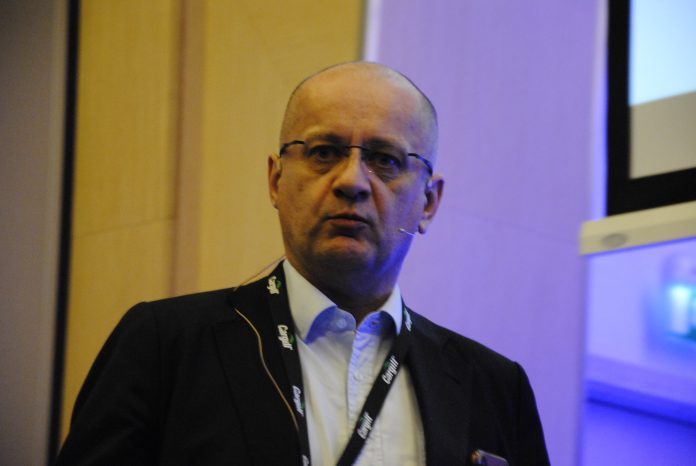Norway has been leading in regards to salmon farming, but if this is to stay solid, something has to happen according to DNB Senior Advisor Dag Sletmo.
First to open the Seafood innovation Day at NASF is Dag Sletmo,DNB, and as he starts out with underlying the milestones made in the salmon industry in Norway, he also points out the need for innovation.
“We are Silicon Valley. Norway is the leader of the salmon farming industry today. But the last couple of years there has been a decline in the tons of harvested salmon, when both looking at the increased licence prices and amount of employees pr harvested tons,” he says.
Referring to the traffic light system in Norway, which determines which areas are allowed to lift production capacity and which are not, Dag Sletmo sees this system is an obstacle for both the exciting industry, but also new companies.
“Today it is cheaper to start land-based or offshore than traditional farming in the fjords. We need to do things another way. High license prices are bringing the industry down,” he says.
But who takes the first step?
More new companies are stepping into the industry, many of them are presenting here today, on the Innovation Day of the seafood forum. But according to Sletmo both new comers and big companies are stepping up and bringing new initiatives to the table, here he points out both Skretting with insects in their feed and the renaming of Marine Harvest to Mowi. Meanwhile there is often still a saying at big companies, that innovation is too costly.
“Most big companies have a saying: failure is not an option.This prevents innovation. Because if you are not willing to fail, then you are not willing to make a change. Small companies say its okay to make mistakes, but the cold facts are that 9 out of 10 start-ups fail,” says Dag Sletmo.
When communicating with the industry Sletmo often hears that the big salmon farmers are not taking enough steps in the innovative direction. Dag Sletmo sees this beginning to change.
“Many salmon farmers have chosen to stay safe, but I think they are starting to realise, that they can not stay where they are. They might then be caught by the shark which is innovation, and fall behind,” he says.
Equally Sletmo identifies that first movers historically do not make as much money as second and third movers do, as first movers take chances, make mistakes and second and third movers learn from these failures.
Dag Sletmo definitely sees that more farmers are moving towards innovation as more dynamics in the market make the industry scared of missing out on innovative ideas, that might bring the companies forward in the future. But the underlying question from Sletmo is, who will be the first movers? And will Norway remain as Silicon Valley of salmon farming in the future?


